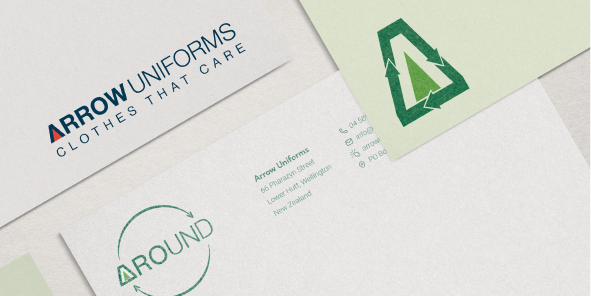For your team to be productive and safe, having the right gear is essential. Yet looks can be deceiving and what appears to be an hi-visibility garment might not actually be up to scratch. Regulations around Hi Visibility workwear in New Zealand and Australia are stringent, so make sure you are purchasing uniforms that are up to code. Saving a few hundred bucks with imported safety gear won’t pay off during a safety audit – or of course, the worst scenario: an employee is injured because of inadequate PPE.
Don’t risk it, protect your team and read up on what’s what – so your team can work safe and be seen.
The team at Arrow Uniforms are experts on safety gear and high visibility PPE. Contact us today at info@arrowuniforms.co.nz and we can do the heavy lifting in ordering your requirements.
Why is safety gear so important?
In a nutshell, the more visible your team is, the less likely they are going to be in an avoidable accident and incident. In 2019, 32,000 workplace injuries and 90 fatalities occured in New Zealand (Worksafe NZ). Out of all the fatalities, the most common accident types were being hit by vehicles and falling or moving objects. Although sometimes the worst can happen, having your team clearly visible when working means others around them can see and anticipate their movements.
Did you know, When someone is wearing Hi Visibility gear, a driver can see them 3 seconds sooner than without, decreasing the risk of injury or collision.
What makes it Hi-Vis?
Hi Visibility garments have special properties – they have a specified area in which the fabric is either fluorescent (in NZ and AU, specific orange and yellow shades are the only colours certified as safe) or have special tape that reflects the light when shone on.
In New Zealand and Australia, only colours on the orange and yellow spectrum are certified as safe. This is because different colours are not visible for those with colour-blindness, or they do not reflect light well, such as the colour blue, which absorbs light rather than reflecting). It is not just enough for a highlighter-coloured shade, however. A fluorescent dye added to fabric absorbs and emits different wavelengths of light, e.g. the ultraviolet light of the sun, to make the fabric glow in the daytime
A little-known fact is that reflective tape will not help you in the daytime! It is only effective when direct light source is shone straight at it – at different angles and in daylight conditions, visibility is poor, or the headlight beams of vehicles to increase visibility in the dark.
Having both the fluorescent fabric and reflective tape (in the right levels) means your staff are visible.
In Aviation, specifications are even more critical – the wrong reflective tape can cause eye/retina damage when it reflects the extremely bright lights of an aircraft.
New Zealand High Visibility Standards
It is important you know what you’re buying when you’re protecting your team with safety PPE – as different garments are required for different types of work and conditions.
Remember to buy garments that fit the two standards below and are suited to your working conditions – for night class garments, this means the correct configuration of reflective tape.
Hi Visibility Classes
|
CLASS D (Day) |
CLASS N |
CLASS D/N (Day and Night) |
|
Fluorescent fabric on both sides of the hi-visibility garment with at least 0.2sqm of the approved fluorescent fabric with no obstructions – such as tape, embroidery, or printing. |
Tape must me at least 50mm wide and the construction of the garment must follow the approved configuration – e.g. the shoulder or hooped configurations. |
The ultimate in safety for your team – the combination of hi-visibility fluorescent fabric and reflective tape means the wearer is visible in both daytime and nighttime conditions |
Standard 1906.4:2010
Garments that comply with this standard have fluorescent materials that don’t fade easily – they’ve been tested for colourfastness after UV exposure, by being exposed to natural daylight for varying periods of time. A garment that fades fast quickly becomes ineffective for keeping people safe. This standard specifies what levels of chromaticity (fluorescent) garments must be dyed, depending on fabric type – in some industries, natural fiber textiles are used instead of standard fluorescent material, and this requires a different level.
Standard 4602.1:2011
This standard explains how a garment should be constructed to be considered safety PPE, using fabrics that comply with the 1905.4. It talks to how the retroreflective material is placed– the metallic-like white tape on safety garments--- on Fluro fabrics compliant to the standard 1906.4. This is a very rigorous standard – Tape is not an exception to the rule of no less than 0.2m2 of unbroken hi visibility fabric is permitted on both the front and back of any garment that covers the upper torso, or from the area from the top of the shoulders to the waist. Underarm vents are also allowed up to 10cm x 10cm. Ensure your garment has the correct tape configuration – there’s 5 different variations.
AS/NZS4399:2017 - Sun protective clothing (UPF rating)
If your employees work in the sun, hi visibility safety clothing that contains a UV filter will be beneficial to keeping your staff safe and productive. Garments under this standard are designed to minimize skin exposure to the sun to make a claim of protection.
NZ Forestry Guidelines for High Visibility Clothing
Personalising Hi-Visibility garments
Arrow can apply logos, embroidery or screen-printing to your hi visibility garments – be aware that these can’t compromise the 0.2m2 space requirement for fluorescent fabric or be printed on the reflective tape. Try customizing your garments with names, roles, and company branding – these can all be printed cost-effectively.
We can print in reflective silver to really stand out in nighttime applications – or choose from different types of certified reflective tape for custom trims and finishes.
Arrow Uniforms has a wide range of hi-visibility products available- and we can source other niche items from our suppliers to make sure all health and safety requirements are met. Whether its vests, overalls jackets, fleeces or polo's, your team will feel safe and comfortable in our uniforms.



Leave a comment
This site is protected by reCAPTCHA and the Google Privacy Policy and Terms of Service apply.